SECOND INTERNATIONAL ORGAN MUSIC FESTIVAL
OAXACA, MEXICO
NATIONAL CONFERENCE
“GUIDELINES FOR THE RESTORATION OF HISTORIC ORGANS IN MEXICO: INTERPRETATION AND IMPLEMENTATION”
November 21 - 24, 2002
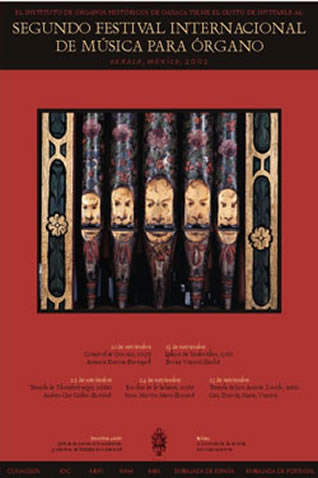
The enthusiastic response to our First International Organ Festival established this concert series as an annual event in Oaxaca. Input from the papers and discussions on the theme of “Restoration of Historic Organs in Latin America” during the Conference 2001 demonstrated that programming the festival in conjunction with other organ-related activities could enhance the listening experience and increase appreciation for the many dimensions and possibilities of the organ. We decided to continue the impulse generated by the Conference by focusing once again on the theme of restoration, but this time it would be on a more practical level.
The Second Festival was organized along with a National Conference dedicated to the theme of “Guidelines for the Restoration of Historic Organs in Mexico: Interpretation and Implementation”, in reference to the document “Guidelines for the Restoration of Organs in Latin America” drafted the year before. So much information had been shared and so many ideas generated as a result of the lectures, discussions, and field trips, that it seemed important to consolidate them in order to prevent their loss. The focus was on practical issues of organ restoration in Mexico rather than all of Latin America, and the event had a more informal flavor in order to emphasize discussion among experts and laymen alike.
The 89 part- and full-time participants included 15 from the United States and Europe, 43 from Oaxaca, and 31 from Mexico City, Toluca and Puebla, with 12 from the National School of Conservation, Restoration, and Museography (ENCRyM) of the INAH. Even though on-site presentations of the organs and discussions of restoration issues were delivered in Spanish and simultaneous translation was not offered this year, several English-speaking organ lovers arrived from the United States anyway, unable to resist the opportunity to see and hear the Oaxacan organs.
Representatives from towns with historic organs from all over the state were invited and 25 authorities from 20 towns with organs attended at least part of the three-day tour. We have found that there is usually at least one person in each community who is committed to the preservation of the local culture, and we were especially pleased to have them participate in our excursions. The event was immensely enriched by their sincere interest in learning about the conservation of their instruments and their active involvement in the discussions, during which they often presented a point of view unanticipated by the other mostly urban-based participants.
Daniel Guzman and Adriana Ramirez, faculty members in the ENCRyM, brought 10 of their students, Mexico´s restorers of the future, who were able to gain a better understanding of historic organs and the specific issues regarding their conservation. We were also privileged to welcome several members, both organists and organbuilders, of our sister organization, Organistas de México A.C., as well as Ignacio Nieto, the director of the Centro Iberoamericano del Órgano Barroco affiliated with the University of Valladolid. As a result of this latter encounter, an official agreement of cooperation was established between the IOHIO and the CIOBA, and we were generously offered financial support a year later for our Third Festival.
Over the course of two and a half days, we traveled by bus to see eight organs, three restored (Tlacochahuaya, Zautla, and Yanhuitlán) and five not restored (Huayapam, Jalatlaco, Ocotepec, Tlacolula, and Yucucuí). We also enjoyed the local cuisine and hospitality in Huayapam, San Pablo Huitzo, and Tlacochahuaya. Daniel Guzmán, the head of the Musical Instrument Division of the ENCRyM, led the discussions based on different aspects of the general theme of restoration, such as: how to document the components of an organ; what local custodians should and should not do to conserve it; to which historic stage an organ should be restored if there are various stages of construction; how to evaluate the craftsmanship involved in building an organ; how to evaluate regional characteristics; how to evaluate whether a restoration, a reconstruction, or the building of a replica is preferable; how to date an organ; and how to best restore the polychrome case decoration.
The restorer Mireya Olvera provided an orientation about the artistic and stylistic elements of each instrument, the architect José Luis Acevedo spoke about technical and architectural details, Ed Pepe shared his general expertise about organs and their conservation, and the organbuilder Susan Tattershall spoke on the restorations of the Cathedral, Tlacochahuaya and Zautla organs. All participants received a notebook containing technical information compiled by Pepe and architectural scale drawings by Acevedo of the organs we visited, as well as a copy of the Guidelines to consult as a reference during the discussions. The goal of these visits was to show how the different ideas presented in the Guidelines could apply to real cases and to create awareness of the complexity of the theme of restoration and appreciation of the challenges confronting an organbuilder. Besides this, three of the invited organists, António Duarte from Portugal, and Andrés Cea Galán and Jesús Martín Moro from Spain also spoke about issues of restoration and the organ culture in their respective countries.
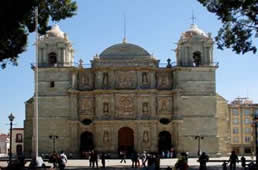
November 21 (Thursday)
Participants gathered in the Oaxaca Cathedral for a discussion about particular issues of organ restorations. Organists Jesús Martín Moro and Andrés Cea Galán spoke about the situation in Spain, which organbuilder Susan Tattershall compared with her experiences working in Mexico. We had hoped to have this discussion at the Cathedral organ, but unfortunately an ear-splitting rock band was playing right in front of the church so we had to meet in the sacristy instead.
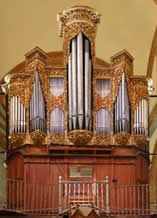
The rock band was still playing at the time the First Concert of the Festival in the Oaxaca Cathedral was to begin, but fortunately stopped at 9:00 PM. Despite the late start, Antonio Duarte´s elegant presentation of works by 16th – 18th century mainly Portuguese composers set the high tone for the rest of the Festival. The artists had received information about the organ each was to play prior to their arrival in Oaxaca, and the works they chose highlighted the tone colors specific to each instrument, as well as the contrasting sonorities of the divided registers.
November 22 (Friday)
The National Conference on the theme of “Guidelines for the Restoration of Historic Organs in Mexico: Interpretation and Implementation” was inaugurated in the Museo de Filatelia de Oaxaca (MUFI) on the Day of Santa Cecilia, the patron saint of music, to a group of approximately seventy people.
The session began with a welcoming speech by Cicely Winter, Director of theIOHIO, who outlined the goals of the conference and the Festival
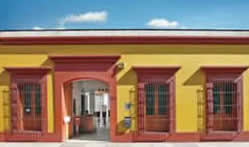 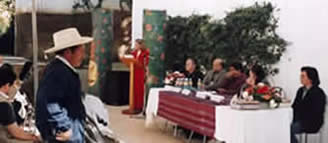
María del Perpetuo Socorro Villarreal, the National Coordinador of the Legal Department of the INAH, then spoke about “The Historic Organs in the Context of the Protection of the National Patrimony.”
Her lecture was followed by “Reflections on Organ Restorations in Oaxaca” by Eduardo López Calzada, Director of the Centro INAH Oaxaca.
Edward Pepe, Sub-Director of the IOHIO, then posed the interesting question of “Who Do the Historic Organs Belong To?” — the town, the INAH, the church, or the world?
José Luis Acevedo Guzmán described “The Profession of the Organbuilder,” a subject of particular interest to him since he spent the previous summer as an apprentice in the organbuilding shop of Gerhard Grenzing in Barcelona.
We were honored to have with us Ignacio Nieto, Director of the Centro Ibérico del Órgano Barroco (CIOBA), in Valladolid, Spain, who spoke to us about “The Protection of Historic Organs in Spain” and what this exemplary project has been able to accomplish.
The opening session was concluded with an “Explanation of the Guidelines for the Restoration of Historic Organs in Mexico” by Daniel Guzmán, Director of the Musical Instruments Division of the ENCRyM (INAH). He read through the document out loud and clarified any confusing points in preparation for the upcoming field trips.
Everyone then boarded the bus for San Andrés Huayapam, a charming village just outside Oaxaca City. Tables had been set up in the atrium in front of the church and women from the community served us heaping plates of higaditos and segueza, meat, egg and corn dishes which are the main fiesta food for this part of the valley. After lunch we visited the intact 4´ table organ (1772), one of the last in Oaxaca with religious decoration, in this case a chalice on the crest.
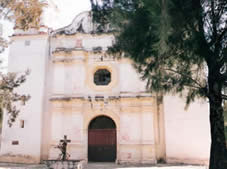 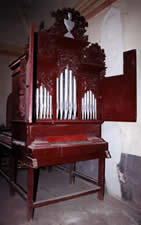
We then proceeded to Santa María Tlacolula just in time to see the monumental organ (ca. 1750) in the fading light of the setting sun. This organ though dirty is quite complete and is seemingly well-protected. The faces on the façade pipes, in alternating tones of red and blue, are the most finely executed and humanistic than on any other Oaxacan organ.
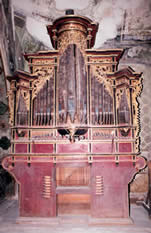 
The Second Concert of the Festival in San Jerónimo Tlacochahuaya featured Andrés Céa Galán (Spain). in a program of 16th and 17th century Spanish and English works which highlighted the myriad tonal possibilities of a Spanish-style organ.
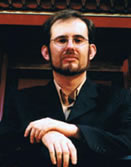 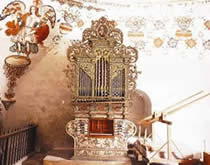
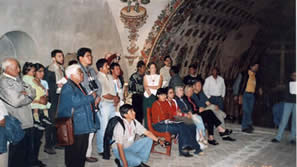
After the concert, Susan Tattershall spoke about the restoration of the organ to the hardy souls who climbed up the winding staircase to the choir loft. And as is customary after our concerts in Tlacochahuaya, local women offered regional snacks in front of the church, so that everyone could bask in the afterglow of the concert and enjoy the lovely night air before returning to Oaxaca.

November 23 (Saturday)
Our day trip to the Mixteca Alta began with a visit to the unrestored 18th century organ in San Mateo Yucucuí. Here we could observe a particular challenge of restoration…the deteriorating beams which support the balcony on which sits this relatively large and heavy 8´ organ.

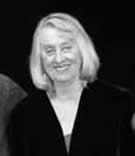
Margaret Irwin-Brandon (U.S.A.) generously accepted our last minute invitation to present the Third Concert of the Festival in Santo Domingo Yanhuitlán, because Italian organist Enrico Viccardi had to cancel his trip due to an unfortunate error by the travel company. Her spirited interpretation of varied works by Italian, Spanish and German composers was enhanced by the marvelous acoustics in this grand 16th century church.
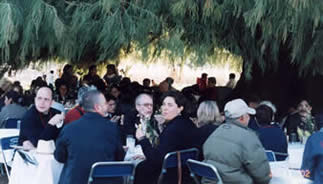
This year we arranged a group meal in San Pablo Huitzo en route to Zautla because our favorite cooks in Zautla were tied up that day with other commitments. As we enjoyed local cuisine served under huge spreading trees by the river, we were entertained by a folk dance group from the community cultural center.
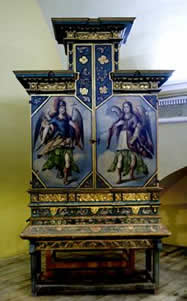
We continued on to San Andrés Zautla for the Fourth Concert of the Festival, featuring all four invited artists (Duarte, Céa Galán, Irwin-Brandon and Martín Moro). Each played three pieces which demonstrated the remarkable phonic possibilities of this 4´ table organ.

After the concert, the audience was invited up to the choir loft to have a closer look at this splendidly decorated organ (1726). Susan Tattershall explained the process of restoration and Daniel Guzmán spoke about specific conservation issues, such as woodworm damage, as well as the feasibility of installing an electric blower.

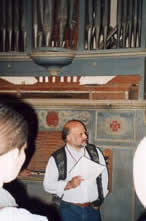
November 24 (Sunday)
The last day of the Festival began with a visit to the unrestored organ in San Matías Jalatlaco. Built by Pedro Nibra in 1866, this elegant blue painted organ, though incomplete, would seem to be an excellent candidate for restoration, since the church is located just on the edge of the city. But more importantly for the goals of our Conference, it served to generate discussion about the factors which must be taken into consideration before restoring an organ.
Our next stop was San Dionisio Ocotepec, located just outside the Valley of Oaxaca on the way to the Isthmus of Tehuantepec. Here we were able to admire the polychromed organ case in the choir loft, which has in its interior a label bearing one of the earliest construction dates in Oaxaca – 1721. The doors of the organ, depicting Santa Cecilia and King David, had been removed, framed and hung in the sacristy some years ago. Although their top panels were cut off and the paint has been retouched, most recently in the 1990s, at least these paintings have been protected over the years.
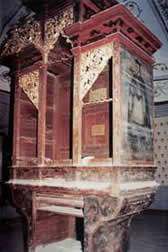 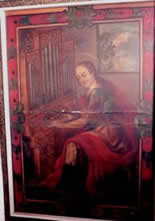 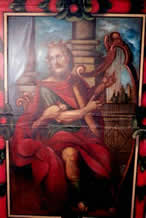
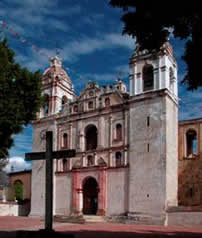
We enjoyed our final group meal of mole negro under the magnificent laurel trees in front of the church of Tlacochahuaya. After the closing remarks and a heartfelt speech by Arnulfo Cruz, the church custodian from Tiltepec, diplomas and group photos were distributed to all participants. The representatives of the organ communities also received enlarged, framed photographs of their organs. It is now up to them to have these photos displayed in the municipal office of their towns as a means of calling attention to the importance of the organ.
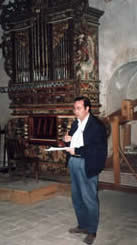
After lunch, we ascended to the choir loft to listen to Antonio Duarte´s talk about historic organ restoration in Portugal and Susan Tattershall´s description of the challenges of restoring this particular instrument
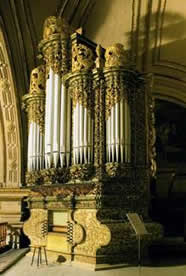 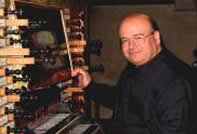
The Fifth Concert of the Festival took place in the magnificent Basilica de la Soledad. Spanish organist Jesús Martín Moro offered a recital of Spanish works, in which periodic bursts of sinuous virtuosity reminded us of the Moorish influence on Spanish music. This presentation brought the festival to a dazzling conclusion.
This festival like the one before it, offered a musical feast of mainly Iberian repertoire, and we hope that its distinctive sound may now be increasingly familiar to Oaxacan ears. Three of the concerts were filmed by the local television station and later broadcast in Oaxaca, while all five concerts were recorded by Radio Educación (Mexico City) and transmitted nationwide.
The ideas which emerged during the discussions about restoration will be incorporated into the Guidelines by the authors of the document Daniel Guzmán, Edward Pepe and Cicely Winter. The next step will be to present the revised version to the INAH in the hopes that it may help define policy for future organs restorations in Mexico.
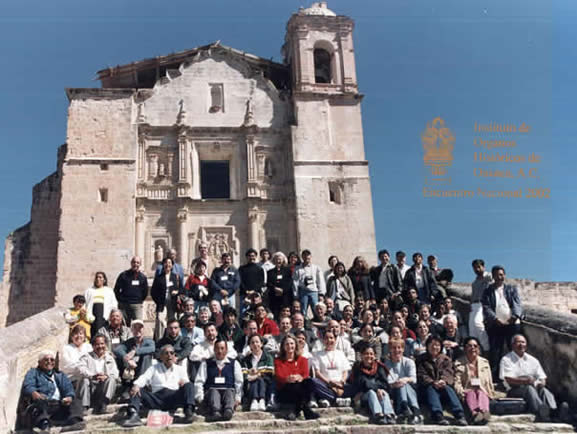
The IOHIO is grateful for the support of the following institutions:
Consejo Nacional para las Artes y la Cultura (CONACULTA)
Instituto Nacional de Bellas Artes (INBA)
Instituto Nacional de Antropología e Historia (INAH)
Instituto Oaxaqueño de la Culturas (IOC)
Fideicomiso Amigos de Oaxaca A.C.
Agencia Española de Cooperación Internacional (AECI)
Corporación Oaxaqueña de Radio y Televisión (CORTV)
Caminos y Puentes Federales (CAPUFE)
We are also grateful for the support of the following Oaxacan business:
Proveedora Gráfica de Oaxaca
|

